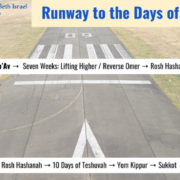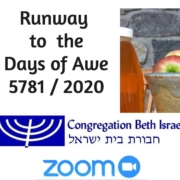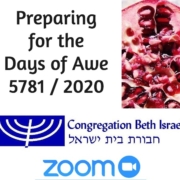“…Pursue justice by approaching the world with the integrity of a juror.
Guard our gates, mindful of what we’re taking in and what we’re putting into the world.
And pour out our hearts – not to the vast indifferent universe, but to an imagined beloved Friend….”
We’re on the runway: the Days of Awe are approaching. We’ve entered the Limbering Up time.
July is upon us. All winter long I anticipate summer’s long daylight: the luscious green curves of our hillsides, how the pollinator garden behind the synagogue becomes a riot of color and leaf. And we’re here! We made it! This place where we are blessed to live is beautiful in all seasons, but this is the season I love the most. And… spiritual life never stands still. The wheel is always already turning toward the holidays to come.
It’s Elul: the month that leads us to the Days of Awe and the new year. Ready or not, here we come.
As I write these words, it isn’t yet quite August. But believe it or not, we’re on the runway to the Days of Awe.

Dear Congregation Beth Israel members and friends,
This past weekend we observed Tisha b’Av, the spiritual low point of our year. Deep thanks go to Jen Burt and family for setting up the “ruined” sanctuary in which we sang Lamentations and opened our hearts to grief — to Rabbi David Markus and the TBE community for joining with us — to everyone who participated onsite and online, for willingness to be real together — and to all of our onsite participants for so quickly and sweetly helping us restore our prayer space to its usual shape and form as part of our ritual of repair.
Tisha b’Av is an experience of descent for the sake of ascent. We open ourselves to grief (both historical and present-day) in order to feel the depths — not for the sake of wallowing, but because this tradition encapsulates a deep spiritual truth. Only when we allow ourselves to feel grief can we also open ourselves to healing, to hope, and to joy. Tisha b’Av is the springboard that launches us on our journey to the Days of Awe. Now we journey through the Seven Weeks of Consolation as we prepare ourselves for the spiritual work of Rosh Hashanah and Yom Kippur.
The High Holidays offer us a journey of heart and soul. Stirred by the ancient melodies of that holy season, roused by the call of the shofar and by Torah’s timeless questions, we will ask ourselves: who have we been, and who do we want to become? What in our lives is “working,” and what needs repair? Which of our patterns serve us well, and which need to change? What work do we need to do in our relationships with each other, with our communities, with our traditions, with our Source, in order to be whole enough to heal our broken world?
In seven short weeks we’ll gather together, both onsite and online, for the Days of Awe 5782. (If you haven’t yet filled out our survey to indicate which services you want to attend onsite, please do so — priority will be given to CBI members. If you can’t find the survey, contact the office and Ollie can re-send it to you.) Between now and then, here are two weekly opportunities for learning and reflection:
Lifting Higher: Weekly Teshuvah Practice for the High Holy Days
Sundays 8:00-8:30 pm (with after-schmooze time) July 18 – August 29
Join Rabbi David Markus and Dr. Shari Berkowitz for a weekly kabbalistic (mystical) journey up the Tree of Life for seven weeks leading to Rosh Hashanah. Each week will be themed to the sefirot (just like the seven weeks of counting Omer, except in reverse), with inner practices to support preparation for the High Holy Days. Free to all. No experience necessary.
RSVP by email to [email protected].
And:
Reverse Omer Group With Jen Burt
Join Jen Burt as we begin in Malchut (Presence) and work our way back to Chesed (Lovingkindness) while studying the haftarot of consolation and moving from summer into fall and the start of high holidays. The group will meet over Zoom for 7 consecutive Tuesdays from 5pm to 6pm beginning July 20. During this time, Jen would like to encourage you to consider the reconnection and social, political and business “re-opening” we are experiencing with their positive and negative impacts as this overlaps with our spiritual season change.
If you are interested in attending or would like more information about this group, please email Jen at [email protected].
May our journey toward the new year open our hearts to new possibilities and strengthen our readiness to work toward a better world. I can’t wait to ring in 5782 with all of you.
With blessings to all,
Rabbi Rachel

Dear CBI Members and Friends,
Selichot is coming up on Saturday night — this year our Selichot services are a partnership between the three Reform congregations in the Berkshires; RSVP here! — and the holidays follow soon on its heels. (Here’s the schedule.) Do you feel ready?
One of my favorite lines in my Passover haggadah is an explanation of why we eat matzah: to remind us of the waybread our ancestors baked in haste, and to highlight the spiritual truth that if we wait until we feel fully ready, we might never take the leap at all.
Like everything else in our core story of peoplehood, this teaching about matzah as a reminder to leap even if we don’t feel fully ready can be a powerful one in every era. The Days of Awe don’t wait until a convenient time, until we feel prepared, until the pandemic is over and we can convene in person again. New moon is on its way. And when that first sliver appears in our night sky, it will be 5781, ready or not.
Readiness is overrated. It’s almost time to start this journey — even if we’re not sure we have everything we need, even if we’re not sure quite where we’re going or how we’ll get there. Spiritual life is like that sometimes. (Spiritual life is like that most of the time.)
The holidays are almost upon us. I’m humbled and honored to be walking this path with all of you in this unprecedented year. It’s okay if we don’t feel ready. Together we’ll step into this High Holiday season that will be unlike any other we’ve ever known.
Together we’ll learn and pray and sing — and hopefully laugh — and maybe cry — and together we’ll make meaning in this difficult pandemic year. Our holidays and prayers and spiritual practices helped previous generations through countless tragedies and struggles. This year, they’ll help us through ours.
Ready or not, here they come.
See you on Zoom very soon.
Blessings to all —
Rabbi Rachel
The Runway to the Days of Awe
- Week One: Seven Weeks Until Rosh Hashanah
- Week Two: Creating Sacred Space at Home
- Week Three: Music
- Week Four: Clothing
- Week Five: What to Expect
- Week Six: Inner Work
- Week Seven: Ready or Not…

Dear CBI Members and Friends,
This week’s high holiday preparation message is about the inner work of getting ready.
One tradition teaches us to spend the month before Rosh Hashanah repairing our interpersonal relationships, so that during the Ten Days of Teshuvah (between Rosh Hashanah and Yom Kippur) we can focus on repairing our relationship with God. Another tradition suggests that we do the personal / spiritual work of examining our relationship with God before the holidays, and use the Ten Days of Teshuvah to repair relationships with each other.
Either way, this is the perfect time of year to think about our relationships with self and others and God. What’s working, and what needs repair? Where do we need to genuinely apologize and make amends? How do we need to change our actions in order to be better people in the year to come?
To get your mind and heart and soul moving along these lines, here is a link to a beautiful poetic English-language reflection by Rick Dinitz on teshuvah (repentance / return), singable to the same melody as Kol Nidre. It is accompanied by a recording, “liner notes,” and explanations:
Here are links to a few posts and sermons from years past:
- Rabbi Alan Lew on… Teshuvah
- When Granting Forgiveness is Not Mandatory During the High Holidays
- The Dream of a Better Past (my Kol Nidre sermon a few years ago)
- Choosing Again
If you’re open to reading something longer, here are two books that are invaluable to me — I return to them every single year at this season, and they always enrich and inform my season:
- This Is Real and You Are Completely Unprepared: The Days of Awe as a Journey of Transformation by Rabbi Alan Lew
- The Days Between: Blessings, Poems, and Directions of the Heart for the Jewish High Holiday Season by Marcia Falk
Both are available as bound books or as Kindle e-books, and both are extraordinary.
Take some time this week to delve into this inner work – looking at your relationship with yourself, and with others, and with tradition, and with our Source. The more of it we do, the more easily we’ll be able to stand before God (whatever that word means to each of us) with a clear and open heart.
Blessings to all,
Rabbi Rachel
The Runway to the Days of Awe
- Week One: Seven Weeks Until Rosh Hashanah
- Week Two: Creating Sacred Space at Home
- Week Three: Music
- Week Four: Clothing
- Week Five: What to Expect
- Week Six: Inner Work
Dear CBI Members and Friends,
The Days of Awe are drawing nearer! I’m writing this week with more information about what you can expect from our Zoom services in general, and specifically, what you can expect from our erev Rosh Hashanah ma’ariv (evening service) and seder.
Days of Awe on Zoom

Our services on Zoom will not be exactly like the services we’ve held in person in years past. Trying to replicate the experience of being together in shul might just remind us of what we’re missing (in-person togetherness). Instead, we’re embracing what’s different about this year, and what’s possible in this new medium that we can’t do in person.
Never fear: we will still have many of the features of “regular” high holiday services: familiar words, familiar melodies, familiar prayers. Avinu Malkeinu (as a niggun on Saturday; with words once it’s no longer Shabbes), shofar-blowing (before Shabbat and Rosh Hashanah formally begin, and on second day Rosh Hashanah and at Ne’ilah), and more.
There will also be images on every slide. And occasional videos. (We can’t sing together in harmony over Zoom, but we can sing along with some of the Jewish world’s finest!) Our encounters with Torah and haftarah will be different than ever before, sometimes involving video, sometimes involving new voices. Every so often I’ll stop the slideshare for a moment of “face to face” time, where instead of seeing the words and images in the slides, we’ll see each others’ faces and connect as a community.
On the second morning of Rosh Hashanah, our service will interweave liturgy with a selection of contemporary poems. We’ll also have the opportunity to hear shofar on the second morning (not on the first morning, because traditionally shofar is not blown on Shabbat.) Our service on second morning will not include a sermon, but will include a Torah video and discussion.
Speaking of sermons, all of my sermons will also be shared on YouTube for those who want to watch the sermons but aren’t inclined to daven (pray) with us on Zoom or Facebook Live.
(Our hope is that most of you will join our services via Zoom, so that we can see each others’ faces. We will also “broadcast” our services from Zoom to the synagogue’s Facebook page. Those who participate via Facebook instead of Zoom will miss the intimacy of the times when we stop the screenshare for “face to face” time, and won’t be able to see the faces of others in our community — but will be able to view the services asynchronously, e.g. after they are over.)
I’m spending the summer crafting this new High Holiday experience for all of us, and connecting with colleagues across the denominations to share ideas and best practices. I’m deeply hopeful that our High Holiday Zoom experiences will speak to your hearts.
About Our Rosh Hashanah Seder

The Sefardic / Mizrahi custom of the Rosh Hashanah seder is ancient — dating back at least as far as the Talmud, circa 500 C.E. — and in many homes quite elaborate. In a traditional Rosh Hashanah seder, there are many symbolic foods whose names are Hebrew puns — e.g. eating carrots (gezer) as a wish for positive judgement, because their name sounds like gezerah (decree, as in God’s decree of our fate.)
Our Rosh Hashanah seder will feature four cups (just like the Passover seder). The first three cups (or sips) will be grape juice or wine. Our fourth cup will be a cup from which we do not drink — a cup of salt water, representing our tears of mourning as we prepare for mourner’s kaddish.
Our Rosh Hashanah seder will also feature symbolic foods, some of which we will distribute in our High Holiday boxes (sign up by September 7 if you want one!)
We’ll taste a bite of maror as we let go of the old year’s bitterness. (Do you have a jar of horseradish? If not, how about a bite of raw onion, or even a sip of vinegar.) We’ll eat pomegranate seeds during the prayer that speaks of Torah and mitzvot, as an embodied wish for mitzvot in the new year. We’ll eat dates before the Bar’chu as a symbol of meaningful relationship. And at the end of the seder we’ll bless apples and honey (sweet foods for a sweet year) and bless a round food (a roll, a challah, even a rice cracker — whatever you’ve got) to represent the cycle of time and how each year we come back around to the beginning again.
(We plan to include pomegranates, dates, apples and honey in the Holiday Box. It’s up to you to come up with grape juice or wine, salt water, a round challah or roll or cracker, and something bitter / spicy for maror.)
In between these seder steps, we’ll pray the evening service, sanctifying the transition from day to evening, from weekday to Shabbat, from ordinary time to festival time, and from the old year to the new.
I can’t wait to celebrate with you soon.
Blessings to all,
Rabbi Rachel
The Runway to the Days of Awe
- Week One: Seven Weeks Until Rosh Hashanah
- Week Two: Creating Sacred Space at Home
- Week Three: Music
- Week Four: Clothing
- Week Five: What to Expect
Dear CBI Members and Friends,
Some of you have asked: if we’re gathering digitally for the Days of Awe, does that mean we can invite our friends and family who aren’t in northern Berkshire to join us? The answer is YES!
Feel free to forward these notes to your friends and family who live elsewhere, and invite them to join the CBI email list so they can receive links for connecting to our services during the Days of Awe. This offers us new opportunities to build community and experience our interconnections in new ways.
In the second post in this series, I talked about making our home prayer space feel special and how to prepare a home space for Zoom prayer. (That post has now been updated with an illustration of what it might look like to ready our space for Zooming into the New Year — deep thanks to Steve Silbert for that!)
This week’s suggestion for high holiday preparations has to do with clothing. Just as a white tablecloth can transform a regular table into a sacred space, clothes can help us transform how we feel in body, heart, mind, and spirit.
One of my earliest high holiday memories is of going shopping with my mom in August, looking for a new fall outfit to wear to High Holiday services. (It was also always far too hot in south Texas to wear heavy wool fall clothes at Rosh Hashanah, but somehow I remember doing so anyway… )
This year many of us may not be shopping, for budgetary reasons or for covid-19 reasons. But I want to encourage us to choose something special to wear for Zoom services, even if it’s something we already own.
Even though we’ll be participating from home (and therefore could show up in pajamas or sweatpants), resist that temptation! Instead make your pre-holiday shower into a spiritual “mikvah,” washing away the schmutz of the old year, and put on something special. Choose clothes that are comfortable and in which you feel good. On Rosh Hashanah and Yom Kippur morning, if you’re going to engage in our annual moment of Jewish yoga (prostration / child’s pose on the floor during the Great Aleinu), make sure you’re wearing clothes that allow for movement.
Getting a bit dressed up is a way of physically reminding ourselves that we’re entering a festival. Even when we’re celebrating from home, we can harness the embodied experience of dressing up to help lift us out of ordinary consciousness and ordinary time.
And on Yom Kippur, remember the tradition of wearing white throughout the holiday, symbolizing purity and new beginnings. You can read more about that here: Preparing for Yom Kippur.
Blessings,
Rabbi Rachel
The Runway to the Days of Awe
Week One: Seven Weeks Until Rosh Hashanah
Week Two: Creating Sacred Space at Home
Week Three: Music
Week Four: Clothing











